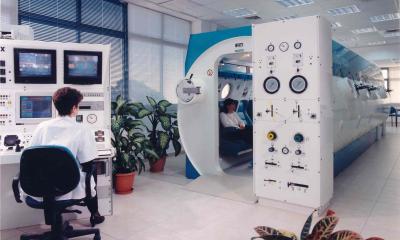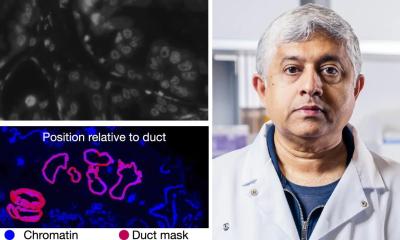News • Radiotherapy side effect assessment
How AI could enhance breast cancer treatment
Artificial Intelligence (AI) could identify patients at increased risk of side effects from radiation treatment for breast cancer.

Image source: University of Leicester
Researchers at the University of Leicester are among those who are helping to develop the new tool to assist doctors and patients with radiation treatment options as part of a 7.4 million Euro project.
Survival rates for breast cancer have risen dramatically, with around 90% now living five years beyond diagnosis. However, some patients are at risk of radiation treatment side effects in the long-term including skin ulceration, breast atrophy, arm lymphedema and heart damage. Some factors that increase the risk of side effects are already known, however, current approaches are based on low dimensional statistics and do not use all available complex imaging and genomics data to inform treatment choices.
Now researchers are hoping AI can do this work for them by predicting where and what side effects a patient will get based on all available data and type of treatment they receive. Crucially the AI will not be a “black box” but provide explanations for the risk predicted for each patient. Dr Christopher Talbot from the University of Leicester’s Department of Genetics and Genome Biology is science coordinator for the project. He said: “AI has the capability to bring together complex information about the benefits and risks of radiotherapy so that doctors and patients can jointly make key treatment decisions. The impact this could have on cancer patients is significant and enables them to make informed choices which will improve their quality-of-life after cancer treatment.
“Although radiotherapy is very good at treating tumours, we know that a minority of patients can suffer significant side effects from radiation treatment. AI could assist in the decision-making process and ultimately improve an individual’s quality of life by predicting where and what the side effects will be based on their genetic makeup. Data from existing cancer patients will be used to design and implement an AI tool that serves exactly this purpose. This will build upon our work over the last few years finding genetic variation that is associated with radiotherapy side effects.”
We are combining expertise from the worlds of computing, radiation oncology, medical physics, genetics, psychology and health economics to tackle this problem and provide better care for breast cancer patients
Tim Rattay
Researchers at the University of Leicester are among a team from across Europe who are developing the tool which will be trialled across 26 hospitals, including Leicester, over the next three years. Funding for the project, known as PRE-ACT - Prediction of Radiotherapy side effects using Explainable AI for patient Communication and Treatment modification - has mainly come from Horizon Europe, one of the EU’s key funding programmes for research and innovation. A contribution of £1.6 million has also come from the UK Government funding agency, Innovate UK.
As part of the project, patient trials will also ask individuals how they wish the risk effects of treatment to be communicated to them. Dr Tim Rattay, Associate Professor in Breast Surgery at the University of Leicester, said: “We are combining expertise from the worlds of computing, radiation oncology, medical physics, genetics, psychology and health economics to tackle this problem and provide better care for breast cancer patients.This project will integrate vital data using AI models and provide built-in explanations for each of the key side effects of breast cancer radiotherapy. It’s our hope that this will be a world-leading product.”
Other institutions involved in the PRE-ACT project are: Athens University of Economics and Business – Research Center (Greece), Maastricht University (Netherlands), CENTAI Foundation Turin (Italy), Consiglio Nazionale delle Ricerche (CNR) Rome (Italy), UNICANCER (France), Maastro Clinic, Maastricht (Netherlands), Therapanacea (France), University of Applied Sciences and Arts of Western Switzerland (Switzerland), Medical Data Works (Netherlands).
Source: University of Leicester
06.05.2023










